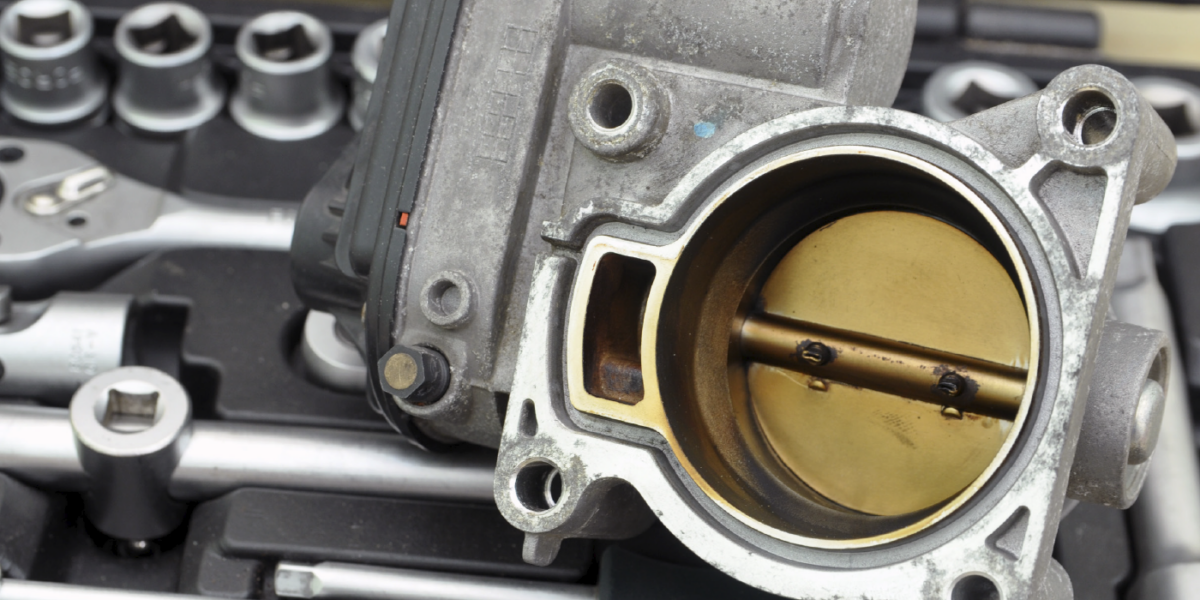Introduction
Electronic throttle control (ETC), a crucial component of modern vehicles, governs the throttle body’s position by receiving electronic signals. Malfunctions within ETC can cause a range of drivability concerns, including idling problems, reduced engine power, and unresponsive throttle. This article delves into the realm of ETC, exploring its significance, potential issues, and the expertise required for troubleshooting and rectifying them.

Image: www.underhoodservice.com
Electronic Throttle Control: A Comprehensive Overview
ETC stands as an advanced throttle control system that utilizes electronic signals to regulate the airflow into the engine, replacing the traditional mechanical linkages employed in earlier vehicles. Integrated sensors meticulously monitor engine parameters such as airflow, engine speed, and torque, relaying crucial information to the electronic control unit (ECU). Guided by this data, the ECU calibrates the throttle body’s position, optimizing engine performance and overall vehicle responsiveness.
Unveiling Common ETC Malfunctions and Their Symptoms
ETC systems are susceptible to occasional malfunctions, often manifested through specific symptoms that provide clues to the underlying problem:
-
Erratic Idling: Malfunctioning ETC systems can cause fluctuations in engine idle speed, resulting in stalling or rough idling.
-
Reduced Engine Power: When the ETC system encounters issues, restricted airflow might occur, leading to a noticeable loss of engine power.
-
Unresponsive Throttle: At times, ETC malfunctions can render the throttle unresponsive, making it challenging or impossible to control engine speed.
-
Illuminated Check Engine Light: Misdiagnoses may arise when the check engine light illuminates due to ETC-related faults. Specific diagnostic codes retrieved from the ECU can pinpoint the issue’s root cause.
Diagnosing and Resolving ETC Problems Like an Expert
Addressing ETC malfunctions requires a multifaceted approach that incorporates both technical expertise and specialized diagnostic tools. Here are some key steps to effectively troubleshoot and resolve ETC issues:
-
Scrutinize Sensor Signals: Begin by examining the signals from the various sensors that feed data into the ETC system. Utilize a voltmeter or diagnostic scanner to verify the voltage readings and ensure they align with manufacturers’ specifications.
-
Inspect Throttle Body and Actuator: Moving onto the throttle body and actuator, conduct a thorough visual inspection for any signs of damage or wear. Employ a diagnostic scan tool to assess the actuator’s functionality and response to ECU commands.
-
Examine Wiring and Connector Integrity: Meticulously scrutinize the wiring harness, connectors, and terminals associated with the ETC system. Search for any loose connections, frayed wires, or damaged insulation, addressing any irregularities promptly.

Image: ranwhenparked.net
Enhancing Vehicle Performance through Tips and Specialist Guidance
As a seasoned blogger, I’ve accumulated valuable insights regarding ETC systems that can empower vehicle owners to maintain optimal performance:
- Regular Maintenance: Adhering to the prescribed maintenance schedule should include routine inspections of ETC components, ensuring their proper functioning and longevity.
- Software Updates: Software updates released by vehicle manufacturers occasionally address ETC-related enhancements and bug fixes. Stay informed about software updates and apply them as necessary.
- Expert Diagnostics: Should you encounter persistent ETC issues that defy home troubleshooting, seeking professional diagnostics from a certified technician is advisable. They possess specialized tools and expertise for precise diagnoses and effective repairs.
Frequently Asked Questions (FAQs)
- What are the potential consequences of neglecting ETC issues? Ignored ETC malfunctions can compromise engine performance, fuel efficiency, and overall vehicle safety. Early diagnosis and corrective actions are crucial to avoid costly repairs or potential hazards.
- How much does an ETC repair typically cost? ETC repair costs vary depending on the complexity of the issue, labor charges, and the make and model of the vehicle. While some repairs can be relatively inexpensive, others may require more specialized components and incur higher costs.
How To Fix The Electronic Throttle Control
Conclusion
The electronic throttle control system governs the delicate balance of your vehicle’s performance. Understanding common ETC malfunctions and equipping yourself with troubleshooting techniques empowers you to resolve these issues effectively. Remember, prompt attention to ETC problems not only enhances driving experience but also safeguards against potential safety hazards.
Are you curious to delve deeper into the intricacies of electronic throttle control? Share your thoughts and inquiries in the comments section below.